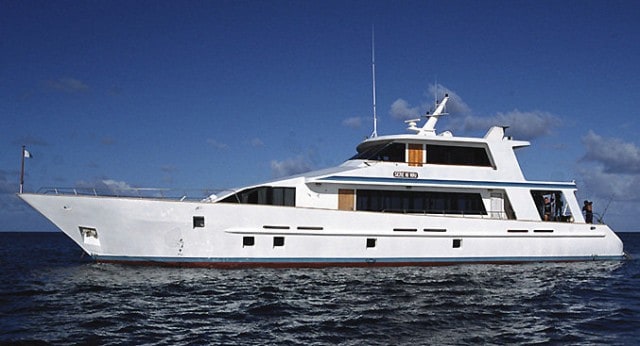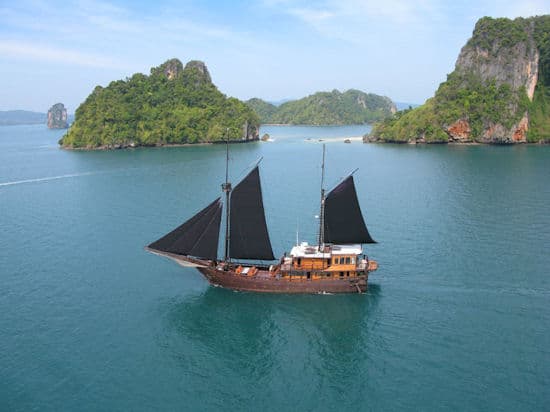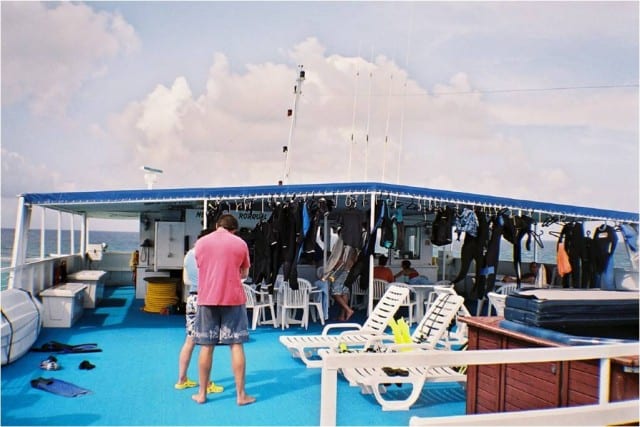Nowadays, tourism has become one of the leading industries in the market, with people planning and wanting to travel more for their much anticipated vacation. Regardless of age and sex, SCUBA diving can undeniably be one of the favourite activities for everyone in the family!
I’m pretty sure most divers out there, “including me”, know what liveaboard means. However, there are still a lot of questions formulated in our head that need answers in order to know more about this service. We are inquisitive on how long does it last, how much does it cost, what are the available locations and other related concerns.
So what exactly is a liveaboard? Generally, a SCUBA dive liveaboard offers divers to rest and remain onboard for several nights and even for a week. It’s better than normal diving because liveaboard is more intense. You can dive three to five times a day. If your body can handle it, you can even dive straight for a week! However, liveaboards staff/team will advise and encourage you to dive at your comfort level.
Liveaboard Boats
Majority of liveaboard boats are commonly made of fiber and steel hull. But in some countries, traditional boats are used as liveaboard vessels.
Liveaboard yatchs are usually associated with luxury. Yachts are different from other types of vessels mainly by their leisure and recreational purpose. Most yatchs have jacuzzis, world class restaurants and the best amenities for guests to stay comfortable while at sea for days. Some even have personal chefs to spice up the restaurant and serve the best cuisines onboard!
If you’re somebody who wants to experience something unique, a pinisi liveaboard is best for you. These are traditional boats in Indonesia, which are built on the beach and have been known to be used for transportation and cargo purposes. A liveaboard pinisi ship can be experienced in Komodo Island.
Does both sailing and diving appeals to you? If you want to experience both then a liveaboard sailingboat is great for you. It combines both activities, which is ideal for divers and non-diving people.
But what makes liveaboard more exciting and enjoyable is the fact that divers/guests can explore remote dive sites, which a day boat can’t normally visit and have access to. Liveaboards can take you to amazing dive sites you never thought can exist! Prepare to be momentarily bedazzled by the spectacular plethora of rare corals, fish and other marine life!
So where exactly can we do SCUBA diving liveaboard? Liveaboards in Komodo, in Indonesia, Australia and in the Red Sea are believed to be the best in the planet. A liveaboard experience could make or break your vacation, so before packing your bags and gears hastily, consider a lot of things before deciding whether to liveboard or not.
Remember that liveaboard trips usually last for more than a couple of days. If being constantly swayed by the sea waves makes you seasick and having small storage space/room bothers you, then liveaboard is definitely not for you. Some liveaboards don’t provide blankets and linens, so bring your handy sleeping bag with you. You can also bring ear plugs or your ipods to avoid hearing noises and snores at night. You don’t want to be sick while on a vacation, right? So a pack of vitamins, decongestants and other meds will definitely help a lot. Before making a reservation, don’t forget to ask if SCUBA gears are provided or not so you can have enough time to pack and check your gears for repair.
So how much does a liveaboard costs? Generally, price ranges from cheap dive boats to private yachts. One thing is for sure though, whatever your taste and budget is, there is likely a liveaboard service that will fit your requirements.
Luxury Class
Rates range from $900.00 to$3,500.00. per person for an 8 to 11day safaris. More often than not, luxury class liveaboards have fewer guests onboard, which give more personalized services. Luxury liveaboards are designed for luxury and comfort. Boats are fully equipped with luxurious Saloons, Entertainment Rooms, Outdoor Jacuzzis and Restaurants; that offer both local and international cuisines in buffet service.
Standard/Normal Class
Standard/Normal liveaboard packages usually starts from $1,000.00 to $2,000.00 for 8 to 15 Day Safaris with up to 4 dives per day. Although more crowded than the luxury boats, standard class liveaboards also have amenities to make its guests comfortable. Most boats have Television Sets, DVD players, Nintendo Wiis, and bars.
Budget Class
Starting from $400.00 to $1,000.00 per person, this package is available for the budget conscious and people with limited budget yet wanted to have a liveaboard experience. Trip duration is from 4 day mini safaris up to 8 day safaris with up to 4 dives per day. Meals are usually plated so expect no buffet meals onboard. Further, be prepared for a noisier and crowded vessel since budget class liveaboards accommodate more guests.
Normally a liveaboard boat can cater and accommodate ten up to thirty guests. Some guests come with their families and partners. Both divers and non-divers are in almost all cases welcome, so a liveaboard can be a mix of everything! Single men and women, young and retired couples, lesbians and gays, rich and poor are all welcome, as long as you can pay for the service and tour packages. 
So when is the best time to go on a liveaboard? Well, it actually depends on the country or location. Generally summer makes liveaboard more fun and exhilarating!
The best time to go on a liveaboard in Red Sea is during the European Summer, which is from June to August. If you want to see some Whitetip Sharks and Whale Sharks while diving then the months of May and June are recommended. Divers can actually dive in the Red Sea any time of the year. However, diving in the months of October to April is discouraged since there’s a tendency that during these times, winds can blow hard and make sea trips unsafe.
As for Indonesia, diving can be done anytime. But if you plan to liveaboard in the country, be sure to do it in the months April to December. This if for the fact that the country is subjected to monsoon season on the first 3 months of the year. However, liveaboard safaris in Komodo Island can be done anytime of the year.
The Great Barrier Reef is definitely the best liveaboard destination in Australia. Diving and liveaboard is great all year round but is best done around the months of December to May. Liveaboard in January and February is not recommended since monsoon occurs on the first 2 months of the year. During this time, wind patterns are unpredictable, which can affect liveaboard schedules and trips.
Happy diving!
 Destinations
Destinations













Your Comments
No comment yet on this page, your thoughts are welcome!
Have you been travelling or scuba diving here? Rate it!(4 votes, 4.00/5)